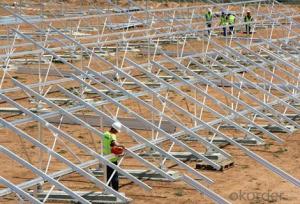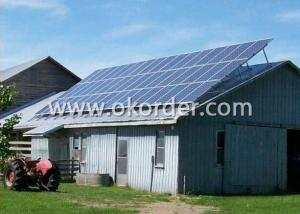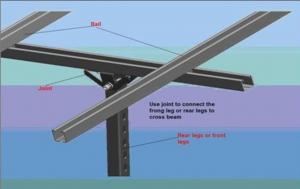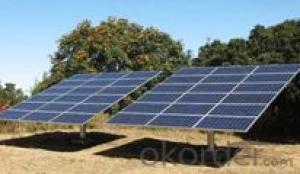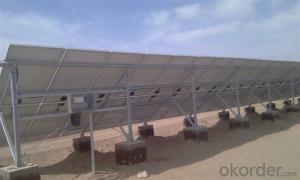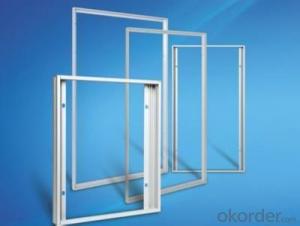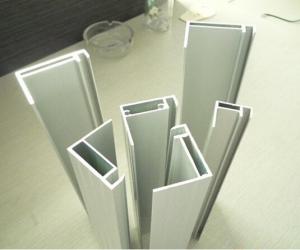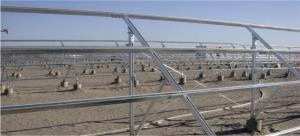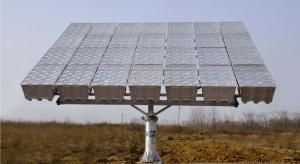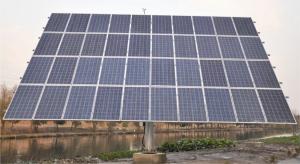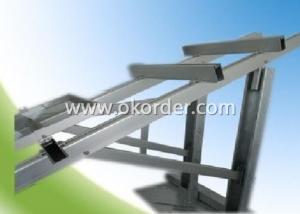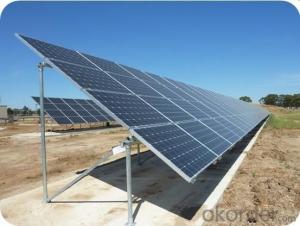Solar Panel Monting System TT-DR-SP1
- Loading Port:
- Shanghai
- Payment Terms:
- TT OR LC
- Min Order Qty:
- -
- Supply Capability:
- 50万套 set/month
OKorder Service Pledge
OKorder Financial Service
You Might Also Like
PV Mounting brackets are special solar photovoltaic systemfor placing, installing, fixing the solar panel design. Generally materials arealuminum, steel structure, stainless steel. PV mounting products at groundmounting system, flat roof mounting system, adjustable angle roof rack system,inclined roof rack system, column bracket system.
The Ground Mounting System including concret basement sysytemand steel pipe sysytem, Titanergy provides total solution for flat or pitchedroof with patent products.On the basis of the given project data, specificnational standards and guidelines, Titanergy will calculate the completestructural analysis and create a complete project plan to make sure reliablestructural safety.We provide high quality HDG steel and aluminum products forthe ground mounting sysytem,witch can make sure the security and durability ofthe project.
Features and Advantages
n The rail bracket is easy to install, just use simple tools(eg, Allen wrench) can be easily installed. Rail connecting member can freelyadjust the length, the stent may be pre-installed on the roof, and thenappropriately adjusted according to the size of the solar panel.
n The combination of strong, aluminum rails and card blocks fora variety of venues and a variety of materials roofs (such as metal, ceramicand other kinds of tile surface)
n Component compatibility, and rail can meet PV modules fromdifferent manufacturers.
n accuracy, the length of the rail to the nearest millimeter,the construction process, not because of the length is too long or too shortfor the second cut.
n flexible assembly, rail hooks can adjust the spacing modulearray and tile has been installed successfully address the uneven roofconstruction led to difficult problems.
n design standards, product design and development process instrict accordance with GB, the German standards and other internationalstandards to ensure products reach the world advanced level.
n Quality assurance, the stent main material is high-qualityaluminum and stainless steel, effectively prevent corrosion of oxidation.Products can be recycled, reducing environmental pollution.
n Carried out strictly according to the current specificnational standards
n Perfectly optimized components and complete structuralanalysis for the sysytem
n High corrosion resisitance ensure the stability and highdurability
n Total test and certification make sure the high quality ofthe products
n Maximum pre-assembled in factory,quick mounting onsite,timesaving
10-year durability warranty
Technical Data
n Design Period:25 years
n Installation Site: Open area
n Array Angle:10°~60°
n ModuleType:Framed or unframed
n Material:Q235B,Al 6063-T5,Al 6005-T5,StainlessSteel A2-70
n Coating:HDG/Anodised
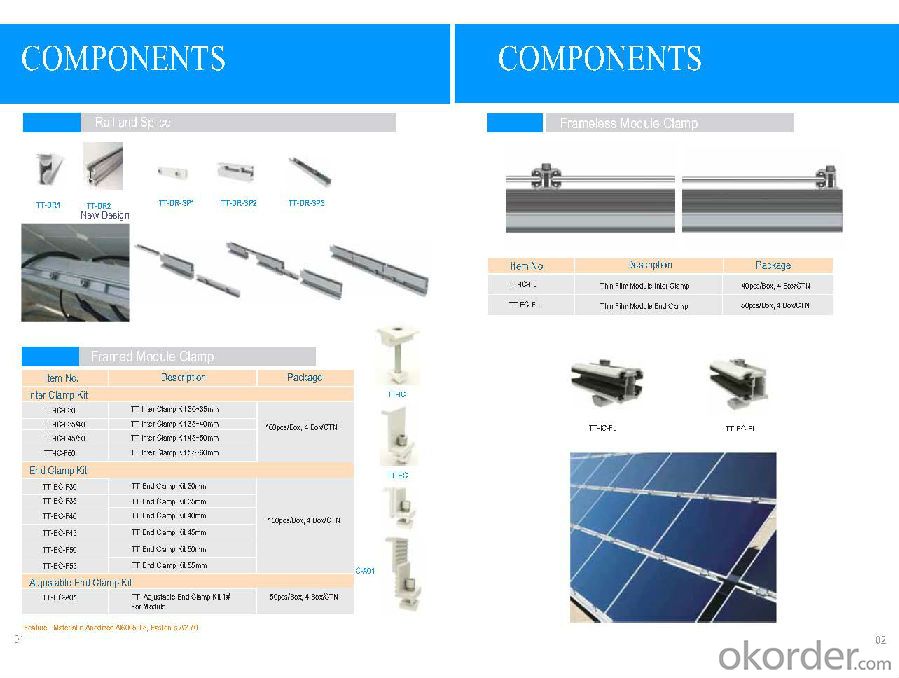

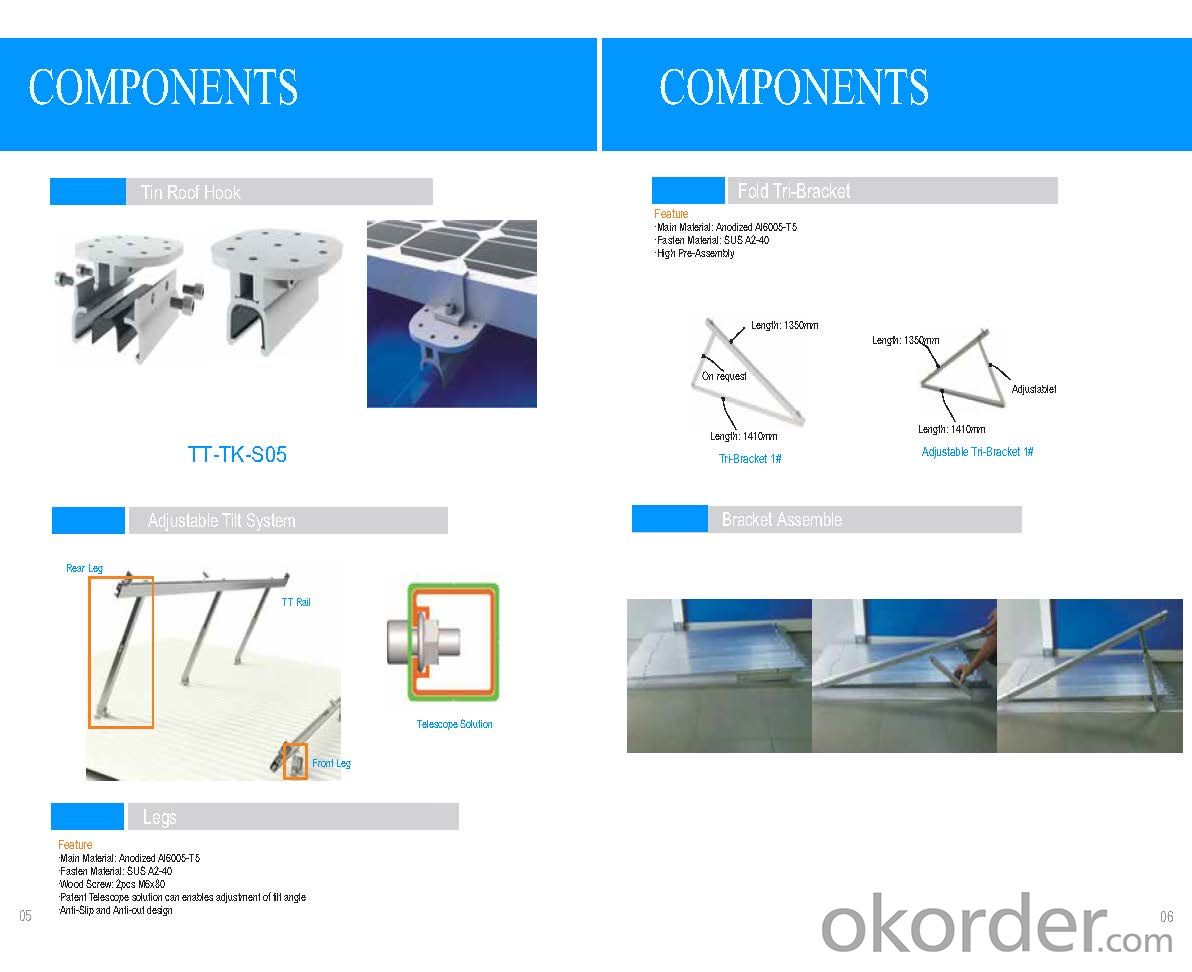
- Q:How does a solar mounting system affect the roof's lifespan?
- A solar mounting system can affect the roof's lifespan positively as it provides additional protection to the roof by acting as a barrier against weather elements, such as rain, snow, and UV radiation. It helps to prevent direct contact of the roof with these elements, reducing the wear and tear on the roof's surface. Additionally, the mounting system distributes the weight of the solar panels evenly across the roof, minimizing the strain on specific areas and potentially extending the roof's lifespan.
- Q:Are there different mounting systems for residential and commercial solar installations?
- Yes, there are different mounting systems for residential and commercial solar installations. Residential solar installations typically use roof-mounted systems, while commercial installations often utilize ground-mounted systems or larger-scale roof-mounted systems. The mounting systems vary in design and complexity to accommodate the specific requirements and structural considerations of each type of installation.
- Q:Are there any specific requirements for flashing when using a solar mounting system on a sloped roof?
- Yes, there are specific requirements for flashing when using a solar mounting system on a sloped roof. Flashing is crucial to ensure a watertight seal around the penetrations made for solar panel installation. It helps prevent water leakage and potential damage to the roof. Proper flashing materials, such as metal or rubber, should be used, and they must be compatible with the roofing material. Additionally, the flashing should be installed correctly following the manufacturer's guidelines and local building codes to ensure a secure and weather-resistant mounting system.
- Q:Can solar mounting systems be installed on buildings with limited roof weight capacity?
- Yes, solar mounting systems can be installed on buildings with limited roof weight capacity. There are lightweight and low-profile solar mounting systems available that are specifically designed for such situations. These systems distribute the weight of the solar panels evenly and minimize the additional load on the roof, making them suitable for buildings with limited weight capacity. However, it is essential to consult with a structural engineer to assess the roof's capacity and ensure proper installation and safety.
- Q:Can a solar mounting system be installed on a rooftop with a gambrel roof?
- Yes, a solar mounting system can be installed on a rooftop with a gambrel roof. The unique shape of a gambrel roof may require some additional planning and customization, but with proper design and installation techniques, solar panels can be securely and efficiently mounted on a gambrel roof.
- Q:Are there any specific requirements for telecommunications or remote monitoring system integration when using a solar mounting system?
- Yes, there may be specific requirements for telecommunications or remote monitoring system integration when using a solar mounting system. These requirements can vary depending on the specific project and its objectives. Some common requirements may include reliable internet connectivity, compatibility with the solar mounting system and its components, data transmission capabilities, and integration with monitoring software or platforms. It is important to consult with experts or manufacturers to ensure proper integration and functionality.
- Q:Can a solar mounting system be used with solar curtain walls?
- Yes, a solar mounting system can be used with solar curtain walls. The solar mounting system is designed to securely attach solar panels to various surfaces, including walls. So, it can be used effectively to install solar panels on curtain walls, allowing for the generation of solar energy while maintaining the aesthetic appearance of the building.
- Q:Can a solar mounting system be used with different panel orientations?
- Yes, a solar mounting system can be used with different panel orientations. The flexible design of many solar mounting systems allows for easy adjustment and installation of solar panels in various orientations, such as portrait or landscape. This adaptability enables optimal positioning of panels to maximize sunlight exposure and energy generation regardless of the panel orientation.
- Q:Can a solar mounting system be used with solar-powered backpacks?
- Yes, a solar mounting system can be used with solar-powered backpacks. The mounting system provides a secure platform for attaching solar panels, allowing them to efficiently capture solar energy and charge the batteries in solar-powered backpacks while on the go. This integration enhances the backpack's ability to harness clean and renewable energy for charging electronic devices during outdoor activities.
- Q:What is the expected maintenance time per year for a solar mounting system?
- The expected maintenance time per year for a solar mounting system can vary depending on various factors such as the type of system, location, and specific components used. However, generally speaking, a well-designed and properly installed solar mounting system should require minimal maintenance. Routine inspections and cleaning may be necessary to ensure optimal performance and longevity of the system. On average, it is recommended to allocate a few hours per year for maintenance tasks such as visual inspections, checking for loose bolts or connections, and cleaning debris or dust from the panels.
1. Manufacturer Overview |
|
|---|---|
| Location | |
| Year Established | |
| Annual Output Value | |
| Main Markets | |
| Company Certifications | |
2. Manufacturer Certificates |
|
|---|---|
| a) Certification Name | |
| Range | |
| Reference | |
| Validity Period | |
3. Manufacturer Capability |
|
|---|---|
| a)Trade Capacity | |
| Nearest Port | |
| Export Percentage | |
| No.of Employees in Trade Department | |
| Language Spoken: | |
| b)Factory Information | |
| Factory Size: | |
| No. of Production Lines | |
| Contract Manufacturing | |
| Product Price Range | |
Send your message to us
Solar Panel Monting System TT-DR-SP1
- Loading Port:
- Shanghai
- Payment Terms:
- TT OR LC
- Min Order Qty:
- -
- Supply Capability:
- 50万套 set/month
OKorder Service Pledge
OKorder Financial Service
Similar products
New products
Hot products
Related keywords
